In California, many customers have low monthly bills for electricity. For example, a single person living in an apartment, a couple living in a small, single family home, or a family living in a very energy efficient home. These customers have bills that are in the $100 a month range.
California has millions of such customers for demographic reasons and also because the state has been a national leader in energy efficiency, through a combination of energy efficiency standards for appliances and buildings that are exercised through the Title 20 and 24 codes administered by the California Energy Commission (CEC) and rebates and other financial incentives offered by utilities, which add up to $1.5 billion. The results can be seen in the Rosenfeld Curve, named after the late Professor Art Rosenfeld who also served as a commissioner at the CEC.
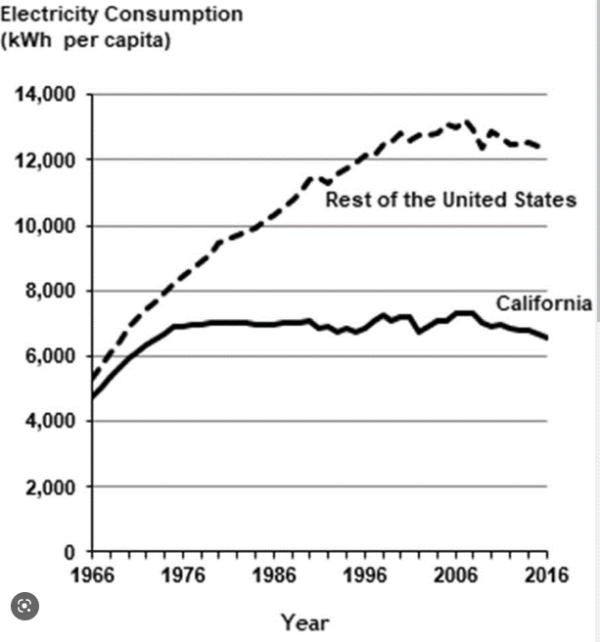
Customers with solar panels also have low bills, typically in the $50-75 a month range. California has the largest number of solar customers in the US. The number is estimated to be around 1.5 million customers, representing more than 4.29 million people, a number larger than the population of 22 states. The utilities are using an invitation for radical rate design as a means to make the state’s electricity more affordable to further undermine the financial viability of rooftop solar so as to keep control of the energy system evolution.
These customers were motivated to install solar panels, in order to improve the environment and lower their bills, which kept on rising with the state’s electricity rates. More recently, due to increasing power outages, more customers have been motivated to pair solar with batteries. Today, California’s rates are more than twice the national average and proposals by Pacific Gas & Electric and San Diego Gas & Electric would accelerate this divergence over the next decade.
In the NEM 3.0 (Net Energy Metering) proceedings in 2021 and 2022, a proposed decision was issued in December 2021 calling for the imposition of a grid access charge (GAC) of $8/kW-month on new solar customers and making it retroactive on existing solar customers 15 years after the customer’s system was put into operation. Under pressure from the citizens of the state, the CPUC withdrew both features in the final decision, but other draconian changes persisted. The Net Billing Tariff adopted for NEM 3.0 is now effective as of April 15 of this year.
Under AB 205, a large omnibus package of energy legislation passed in the budget and enacted in 2022, the three investor-owned utilities were authorized to implement income graduated fixed charges (IGFC) for residential customers. This has no parallel anywhere else in the U.S. It will have several unintended consequences, as discussed below.
Historically, fixed charges in California have been capped at $10 per month. Whenever the utilities have tried to increase the fixed charge (either via legislative or regulatory mechanisms) the principles of energy conservation have stopped momentum for higher fixed charges.
The AB 205 legislation did not specify the magnitudes of the new fixed charges. The magnitude of the fixed charges that the utilities have proposed will not only cripple the economics of rooftop solar panels for customers. It will also cripple the economics of energy efficiency investments and cause customers to lose interest in demand response programs.
The implementation of the IGFC will entail the creation of an onerous, intrusive, and expensive verification system to collect, verify and update customer income data and to police these large charges.
The three investor-owned utilities have proposed the IGFC’s shown in the table.
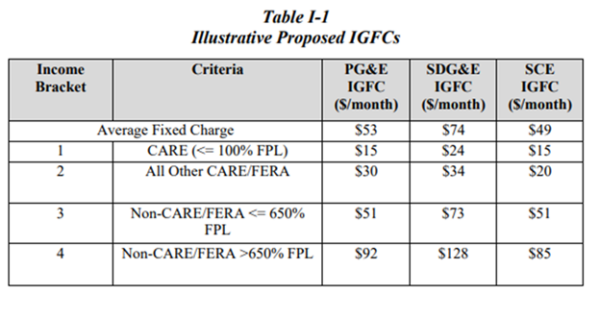
To put these proposed charges in perspective, it’s worth noting that two of the three utilities don’t have any fixed charges today. The third has a nominal fixed charge of less than a dollar per month. All that the three utilities have today is a minimum bill requirement of ten dollars.
What do fixed charges look like in the rest of the country? The national median of fixed charges is just over $10, as measured across 173 investor owned utilities. Using data from EQ Research, I have generated this distribution of fixed charges across the country. The highest is $37. Most of them are under $20 a month. Not only are they lower than the charges in the proposal put forward by the three California utilities, none of the fixed charges in the US depend on a customer’s income.
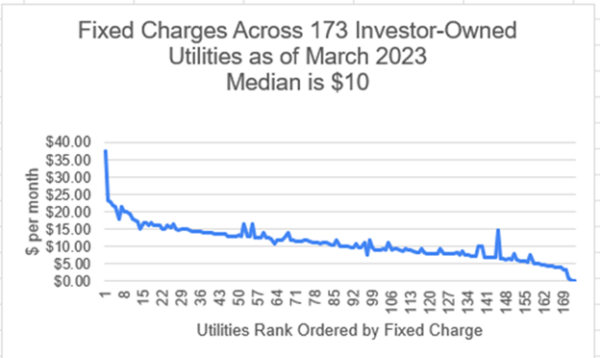
The three utilities’ proposal has generated more buzz in the media than any other rate design proposal in recent memory. Websites like Rstreet, San Diego Union Tribune, LA Times, and many others can are some examples of the uproar.
It has also generated a volley of editorials and angry letters to the editor of the major newspapers in the state.
Impact on customer bills
While these charges are intended to apply to all customers, what will be the impact on solar customers?
Unlike the grid access charge which was proposed and rejected in the NEM 3.0 proceedings, the IGFC will apply immediately to existing solar customers once it’s approved and rolled out.
Under IGFC, if a NEM 2.0 customer in the PG&E service area has installed 8 kW of solar and falls in the fourth income bracket, he or she will pay $92 a month while being given a 35% reduction in energy costs, which on average will drop from 34 cents/kWh to 22 cents/kWh for PG&E.
This redistribution of charges will significantly erode the customer’s bill savings, as shown in the figure below.
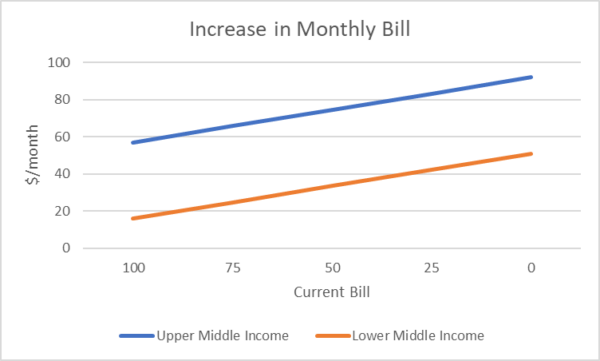
Focusing initially on customers in the fourth income bracket, i.e., upper middle income, if their current bill is $100 a month, it will rise by nearly under $60 a month. If their current bill is $50 a month, it will rise by nearly $75 a month. The impacts will be lessened for lower middle income customers in the third income bracket but will still be significant, especially for customers whose bills are lower than $50.
To date, it is higher income and middle income customers that have installed solar and replaced some of their existing inefficient energy consuming devices, like space heaters and water heaters, central air conditioners, refrigerators, washing machines and clothes dryers, and dishwashers. It is not low income customers, who typically have other pressing expenses, like food, clothing, housing and transportation, and most often are not in control of energy saving investments because they rent.
The savings from IGFC for low-income consumers will not be sufficient to persuade them to replace inefficient appliances or to electrify by replacing natural gas-fired stoves and heaters or to replace gasoline cars with EVs, in large part because they are most often renters.
Moreover, increased electricity costs for middle and higher income customers will give them less discretionary capital to spend. Indeed, lower kWh charges for all customers than in alternative rate designs seem likely to incrementally increase electricity demand from existing air conditioners, lights and appliances, especially on sweltering, hot summer days. This will happen at an inopportune time, when the state has been focused on meeting increased reliability concerns with existing peak demand. The rate reduction is so untargeted that it is difficult to envision how much of an incentive it will provide to electrify current gas uses.
Essentially, the IGFC will lengthen the payback period for existing solar customers. Their investment in solar will suddenly look a lot less than attractive than it was when they made their decision, in good faith and abiding by the rules at the time, to invest in solar panels. Many would not have invested in solar if the IGFC had been in place. The CPUC should not adopt a change that punishes people for choosing to do the right thing when we asked them to do so.
The IGFC, which is being held out as an example of forward-looking rate making, will definitely have a deleterious effect on the monthly budgets of all solar customers. It will also harm non-solar customers who are frugal in their use of energy either because they are single, or live in small homes or apartments, or made investments in very energy efficient homes. Those customers who have electric bills under $200 a month in the fourth income bracket or with bills under $100 in the third income bracket would see bill increases.
But they would not be hit as hard financially as solar customers since they would have not have made as large of aa major capital investment spent the same amount of money to lower their bills.
Ironically, utilities are quick to say that they love solar but only if the price is right. Having failed to institute a grid access charge on new solar customers, they have now found a way to hit all solar customers, new or old, with something even worse, the IGFC, leading some to say that this is their “second bite at the apple.”
Professor Bruce Mountain from Australia’s Victoria University had this to say:
“Looking at this development from Australia, this is all rather weird to watch. In Australia there is now a growing consensus that the best place to put solar is on roofs (we have about 27 GW on our roofs). The transmission expansion stuff associated with large scale ground-mounted solar is becoming a nightmare. Surely that will be the case in California as well.”
The IGFC maneuver is cleverly disguised as a plan to promote equitable electrification. Whether or not it will do that won’t be known for years, since in any given year only 5-10% of customers are in the market for an air or geothermal heat pump or an EV. In the meantime, the utilities would have shored up their declining fortunes.
Recommendations
The CPUC should carefully think through the implications of the IGFC. There is no need to rush to a decision. There is general agreement across most parties that fixed charges should be introduced into rate design. But they should be based on cost of service studies, not simply backed out as a residual by arbitrarily lowering the volumetric rates. In the end, they should be no higher than $25 a month. One California municipal utility considered among the most innovative, Sacramento Municipal Utility District, charges $23.50 per month.
The members of the state legislature ’s assembly members should rethink the income graduation clause in AB 205. No where else in the US is that being done on the scale that the utilities are proposing, and for good reason. Income data is confidential and should remain so. Further, determining the “income” for a household can be quite complex in a world of varied relationships.
Through the CARE program, California already offers a 35% discount on electric bills for low income customers. This discount is among the highest in the country and the CARE program certainly has the largest number of customers on it, approaching a third of households.
Low-income customers are also eligible for energy efficiency rebates and other forms of financial assistance. The CPUC might consider approving additional funds for such programs, as well as incentives to help low-income customers afford the high upfront costs of EVs and heat pumps. The legislature should also consider providing them incentives through the tax code, perhaps by creating energy stamps.
Any new fixed charges that are introduced by the utilities ostensibly to encourage electrification should be introduced gradually and not suddenly. They should be optional for customers interested in buying heat pumps and EVs who agree to use a time-of-use rate with low-off-peak rates, not mandated for all customers. Only 5-10 percent of the customers in any year are in the market for heat pumps of EVs. Why impose these rates on all customers when there is no empirical evidence that they will induce electrification?
Furthermore, the CPUC should ask the utilities to conduct pilots with such rates that include higher fixed charges rates before making them a part of the default rate. The state conducted pilots for two decades with TOU rates before making them the default rate. That precedent should be honored.
Finally, the CPUC should also consider other options that have been proposed such as providing energy allowances priced as a steep discount for replacing gas appliances and gasoline cars with electric ones. This approach would directly induce the electrification that is the stated intent of the IGFC.
The author Ahmad Faruqui is an energy economist with four decades of research and consulting experience in rate design and energy efficiency.
The views and opinions expressed in this article are the author’s own, and do not necessarily reflect those held by pv magazine.
This content is protected by copyright and may not be reused. If you want to cooperate with us and would like to reuse some of our content, please contact: editors@pv-magazine.com.
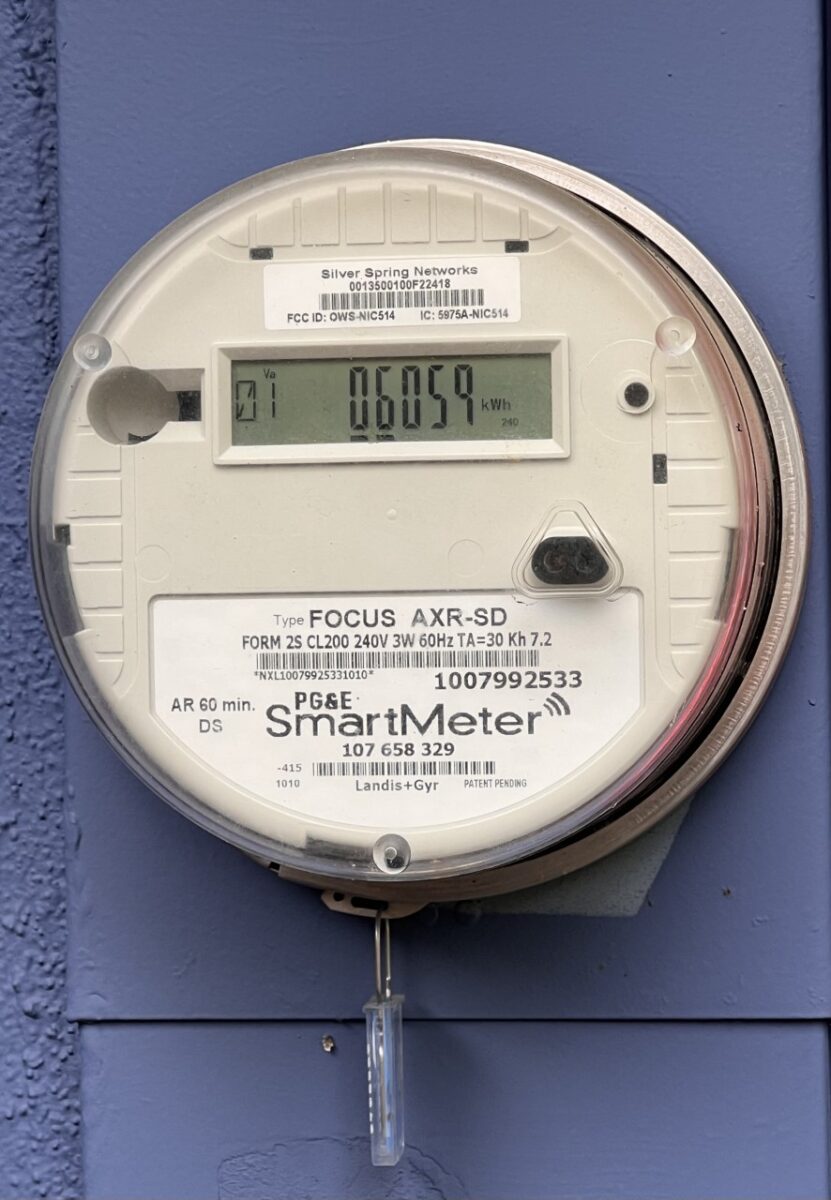







See Severin Borenstein’s blog post here.
https://energyathaas.wordpress.com/2023/05/01/rebalancing-rates-for-electrification-and-equity/
“Many households will see huge bill increases, particularly higher-income customers with solar.”
Actually, the great majority of middle and upper-income customers won’t see large percentage changes in their bills either way. Wealthy households who have low consumption from the grid will see the largest increases. These are mostly people who have made investments in rooftop solar, investments that have already paid off beyond their wildest dreams as the retail rates they avoid have skyrocketed. Even with IGFCs, anyone who installed solar before the net energy metering rules changed on April 15 (including the avalanche of customers who adopted over the last 4 months) will still see substantial savings from their investment, though not as enormous as they would if we continue to load all of the skyrocketing costs into volumetric rates.”
Ahmad’s argument about charging based on service costs is all well and good but we’ll largely end up in the same place because higher-income homes have higher service costs. There are many reasons for this but I’ll highlight just one: The ratio of peak consumption to total consumption is much higher for high-income households – i.e. High income households are responsible for a higher percentage of peak load than low/medium income households. This translates directly into higher costs of service so it makes a good deal of sense to charge higher-income households higher fixed fees.
Actually, Lee Kasten is dead wrong; Severin Borenstein is a corporate shill, and PG&E has funded studies at the Haas School of Energy at Berkeley.
People who make just above the CARE cutoff ($39,440) will suffer the most, proportionally. See, instead, the Clean Coalition testimony here, esp. pages 7 through 11:
https://drive.google.com/file/d/1x5oSKzkWl4lg80_kyTNF_IcsO2AxoaIk/view
Also: Big Utility friends like NRDC, Verdant, and E3 have proposed IGFC only for incomes of up to $180,000. That means that multimillionaires & billionaires would still pay the same IGFC ($50-92) as those who make $180K. So anyone who makes over $180K will have zero incentive to conserve–in fact, they’re likely to waste even more. The energy crisis will worsen, the grid will be strained, and we’ll have even more blackouts and wildfires.
How about instead of codling low income all the freakin time we push then to be better. My whole live… Low income this, low income that… Poor people not making good decision.
It is called survival of the fittest for a reason
I appreciate the time you took to write this. It’s well written and gave me the words I needed to write some folks in office. Lots of bills pass and they have little impact on my life — this one has immediate negative consequences for me and my family. I’m very weary of their mishandlings of all things, while still deeming themselves worthy of the highest rates in the nation.
The tyranny of the cpuc is staggering. I understand the utility companies have to make money to stay in business, but this is unfair on many levels. For those who did their due diligence and got solar installed as a long term investment, this will have an immediate negative impact. Also, this will further disincentivize rooftop solar (as if they hadn’t enough already with NEM 3.0). This is discouraging news and yet another reason you have so many wanting to flee California.
Best article Ive seen on this topic. This is CLEARLY a shot at solar customers who made good plans and agreed to the deal the state offered us. Now the state has had second thoughts and wants to take back the deal they made with solar owners. Lawsuits will be coming for sure.
California CPUC board members are energy company operatives. They are the most intellectual board in the country so they are not dumb people. Look at how they handled the so called winter gas shortage. They didn’t do a thing to help. Fill the natural gas storage tanks to capacity now. Mark my words come this winter the Gas companies will charge 10x more and the CPUC will give their blessing. How much do you think the CPUC members are making on this electric deal? The State would never allow that you say! Oh, please the state unemployment fraud was a 50 billion dollar fiasco and that’s peanuts compared to this electric scheme. Don’t even get me started on the DMV.
Absolutely ridiculous; the ongoing subside of the indigent is slowly pricing out the people who worked hard to improve their lives and succeed. What will this state do when the middle class leaves in mass with only the hyper wealthy (on average find ways to avoid taxes, even so aren’t numerically enough to sustain) and the poor who don’t provide anything or very little and generally receive remain. Middle of the road liberal, loved this state but I get the exodus. Between the idiotic policies on crime, bums(not saying the woke term), and the over taxation of the middle class citizens that have solid jobs/ education, this state is certainly looking to become that dystopian, running man future (beautiful enclave surrounded by squalor).
PV magazine, what a joke! 1st amendment freedom for PV but not for others
Where is the analysis of transmission & distribution investment & maintenance costs for various modes of generation & use of electric power?
Building roof solar power generation directly reduces the corresponding HVAC power use with small impacts on the grid. So this should be the least expensive.
When looking @ the monthly SDGE bill, we are amazed by the number of “non-bypassible” charges that cover such utility items such as transmission, distribution, public good programs, minimum service charges and nuclear decommissioning. As you know, per CPUC/legislative directives, Utilities cannot make a profit on power supplied to their customer base (I find this hard to believe as the Utilities bury costs NOT profit into the rate per kWh) but can charge a profit on “infrastructure” investments. So why not build more transmission lines, solar farms, and other tertiary end items. Maybe rooftop solar generators should back charge the utilities for system maintenance, infrastructure improvements and the like. Amend AB 205 and delete the fixed rate sections.
Interestingly, the ad that ran next to this article is for residential energy storage. Solar homeowners that can afford to add batteries to their systems will do so, and cut the cord. That will eliminate the monthly fee, for them and ultimately move the costs that the utilities were trying to reallocate to the rich, right back to the people that can afford these costs the least. Charging based on usage, and time of use makes sense. Charging based on income doesn’t and will have unintended consequences. What if the grocery store, restaurants, and gas stations start charging you more based on your income? Sure doesn’t sound like capitalism.
Lee Kasten, do you mean high income, OR wealthy, OR both?
What is the latest on whether the CA PUC will implement the fixed monthly charges in question starting in 2024? I have heard that the PUC May or May Not do so in 2024.